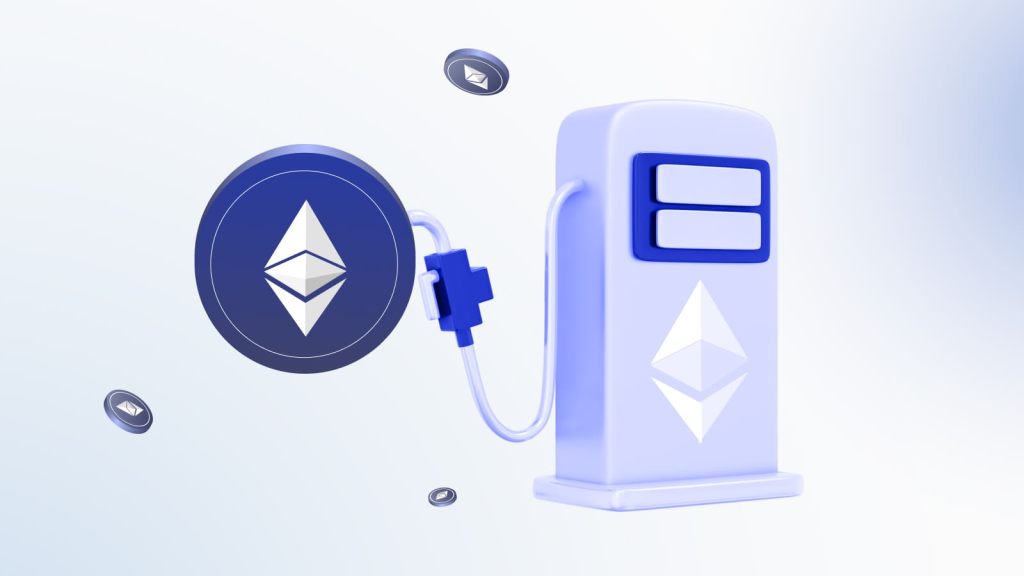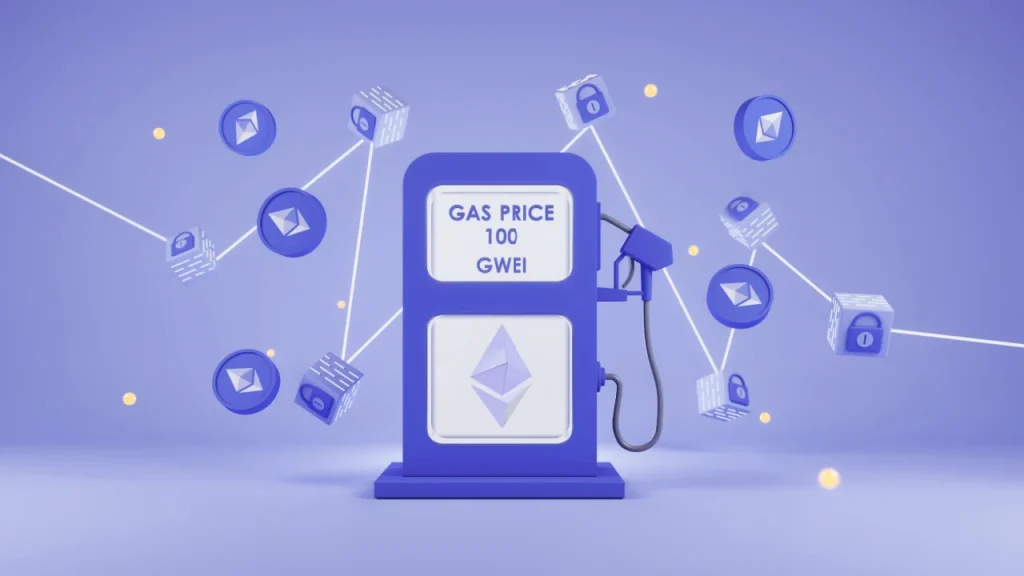What is gas in Ethereum? To understand how the network operates, it is necessary to grasp the basic concept. Gas is an internal unit of measurement used to evaluate the amount of computational work required to perform operations within the blockchain. Any transaction in Ethereum — transferring coins, interacting with smart contracts, or using decentralized applications — requires resources. It is the transaction fee that determines how much network energy will be needed to execute it.
In simple terms, gas in ETH is digital fuel without which the network cannot process data. It is not considered a separate cryptocurrency, but it is calculated in ETH since fees are paid in Ether. The more complex the operation, the more “fuel” is needed, thus increasing the overall Ethereum fee.
Calculation Mechanics of Fees and Time Impact
The calculation formula includes two parameters: the amount and price of gas in Ethereum. The first parameter reflects the amount of work, while the second represents the current cost of one unit in Gwei (a small fraction). It is important to consider that the fee depends on network congestion. During transaction surges, users offer higher prices to get included in a block faster.
Timing also plays a role: network load is lower at night or on weekends, which can reduce the total amount. Understanding these factors helps in making more advantageous decisions.
Why Gas Fees in ETH Can Be High: Simply Explained
Periodically, users encounter sharp cost increases — sometimes even a simple transaction can cost tens of dollars. This is not only due to increased demand but also because of network bandwidth limitations. The introduction of new tokens, NFT drops, and popular DeFi projects can significantly increase transaction volume.
In such moments, it is particularly important to understand how gas works in Ethereum and consider the risks of overpaying. It is impossible to completely avoid fees, but they can be reduced with a smart approach!
Factors Influencing Gas Costs
The price of “fuel” is influenced by numerous factors — from technical to behavioral. The main variables determining costs are:
- network load — the more users, the higher the competition for block inclusion;
- operation volume and type — interacting with smart contracts requires more resources;
- urgency — priority transactions cost more than regular ones;
- overall volatility — price growth can increase absolute percentage values;
- protocol updates — implementing second-layer solutions temporarily reduces load.
Understanding these aspects allows for cost control and proper transaction planning!
Advantages and Disadvantages of the System
For those who are new to the market, it is important to consider both the pros and cons of a model based on “fuel.” Below is a list of key features:
- transparency of fee calculation;
- flexibility of settings depending on the budget;
- network protection from spam and overload;
- incentivizing validators through fee collection;
- link to market demand for resources.
However, there are also downsides:
- high cost of operations during peak loads;
- difficulties in understanding for newcomers;
- lack of fixed fee values;
- impact of external factors on stability;
- dependence on Ethereum 1.0 and 2.0 architecture.
In simple terms, gas in ETH is not just a fee but a whole system of priorities, pricing, and protection against abuse!
How to Reduce Fees in Ethereum?
Given the price volatility, many users wonder how to reduce fees. There are effective methods to partially optimize expenses. The main ones include:
- using Layer-2 solutions — Arbitrum, Optimism, and others allow for operations with minimal fees;
- choosing low network load times;
- manually adjusting fees in wallets (if experienced);
- optimizing smart contract logic (relevant for developers);
- tracking average prices through monitoring services.
Following these recommendations helps reduce expenses, especially with regular blockchain operations.
Why Costs Are Important for Network Security?
Without the “fuel” system, the network would be vulnerable to attacks. The need to pay for each operation limits spam and excessive load. It also provides motivation for validator nodes, which receive rewards for processing transactions.
In simple terms, gas in ETH is a mechanism that protects, balances, and manages the network’s internal economy. It makes the ecosystem viable despite increasing popularity and expanding participant numbers.
Difference Between Gas and Fee in ETH: Explained Simply
It is important to understand that the gas fee in Ethereum is only part of the total transaction cost. The fee includes the product of the amount of “fuel” and its price. Users can adjust the price themselves, provided that the transaction is not rejected due to a too low rate.
Novices often think that the fee is determined randomly. However, it strictly follows the logic of gas calculation in ETH, and every step can be traced, especially through block explorers like Etherscan.
Future of the “Fuel” Model
Blockchain development is moving towards cost reduction and improving user experience. Ethereum actively implements scaling technologies, including sharding and Layer-2. These innovations promise not only to increase throughput but also significantly reduce Ethereum fees.
It is expected that the system will also be adapted to new architectural principles. The EIP-4844 model is already being discussed, aimed at stabilizing costs and simplifying network interaction. However, even in the future, gas in ETH will remain a key element of the blockchain’s internal logic, to put it simply.
Conclusion
In simple terms, gas in ETH is a system for calculating the computational work required to perform transactions and operate smart contracts on the Ethereum network. It directly affects the fee, shapes user behavior, and protects the infrastructure from overload. Despite the complexity of the technology, understanding its basics is accessible to everyone, especially with motivation and interest.
Adhering to basic principles and using optimization tools helps reduce costs and make work more predictable and profitable.









 The cost of computing power units often causes dissatisfaction among users, especially during periods of peak network load. The high rate is due to objective factors, including the specific characteristics of the blockchain and the demand for its services.
The cost of computing power units often causes dissatisfaction among users, especially during periods of peak network load. The high rate is due to objective factors, including the specific characteristics of the blockchain and the demand for its services. Ethereum has become the foundation of decentralized finance and applications, but using it effectively is impossible without understanding how gas works. The mechanism ensures network stability, regulates its load, and protects against spam. By understanding the details, users can significantly reduce their costs and make interacting with the blockchain more convenient.
Ethereum has become the foundation of decentralized finance and applications, but using it effectively is impossible without understanding how gas works. The mechanism ensures network stability, regulates its load, and protects against spam. By understanding the details, users can significantly reduce their costs and make interacting with the blockchain more convenient.